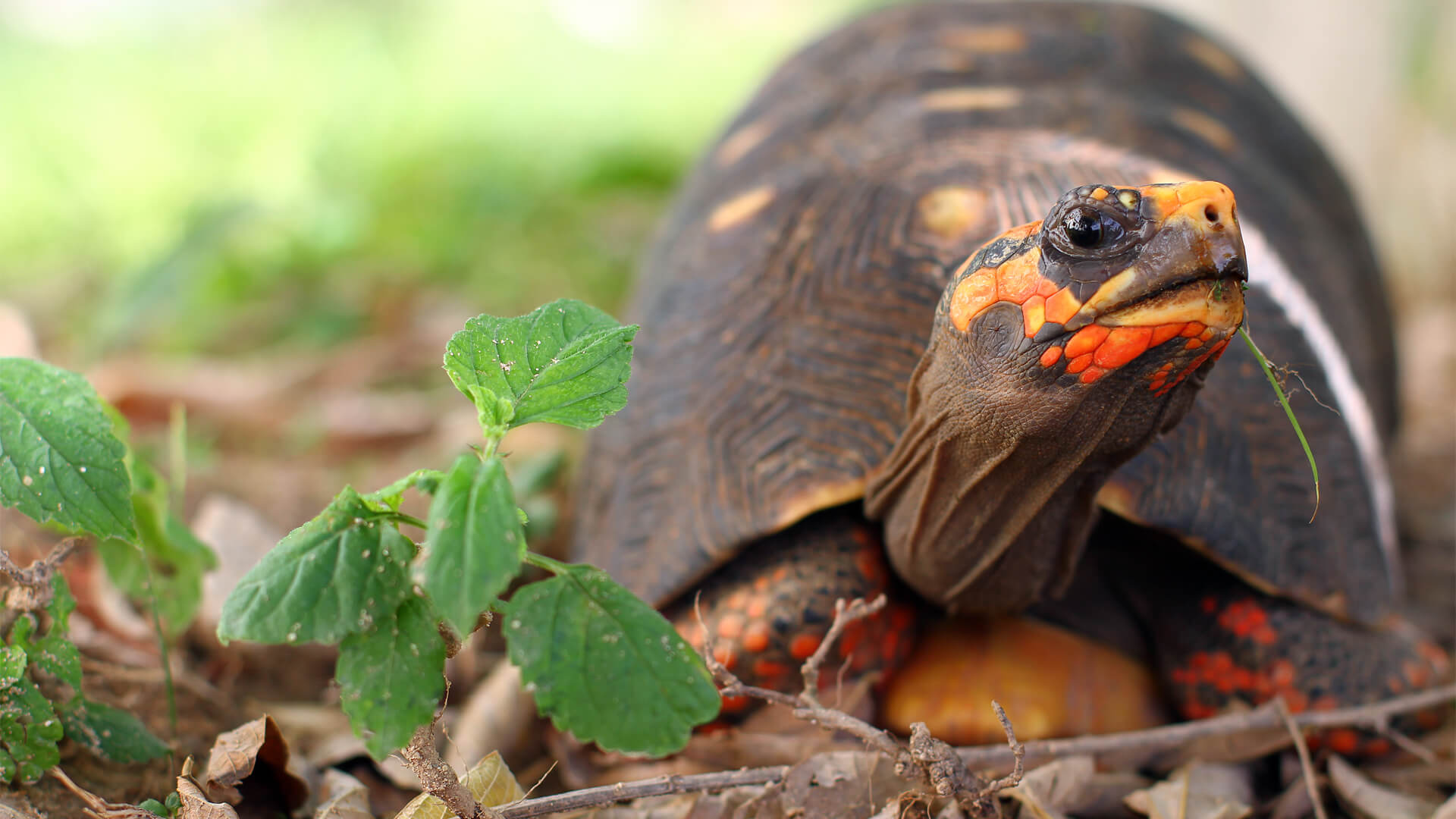
The red-footed tortoise is native to South America. They are named for the red scales present on their legs and head. Their shell is dark with yellow/red areas around each of the scutes (plates on the shell). Their skin is black.
Although not endangered, this tortoise species still faces many threats, including over collection for food and the pet trade in addition to habitat loss. When adult tortoises are taken out of the wild, the population may have a hard time recovering due to the long time it takes for tortoises to mature. When buying a animal such as a tortoise as a pet, always make sure to demand a captive-born individual, never an animal taken from the wild. Many more tortoises are taken out of the wild and die than ones that actually make it to the pet store.

Male tortoises have a concave belly to assist with reproduction, while females have a flat belly. This is why we thought our Program red footed tortoise was a male, and named "him" Robert. Turns out Robert is a female that just happens to have a concave belly, and so now she is Roberta!
Hilaire
Tortoises do not have teeth. Instead, the edges of their mouth is sharpened and acts like a birds beak to help break off pieces of fruit, plant material, or grab an insect.
South America
Dry forests, grasslands, and savannahs
Average a foot in length
Fruit, plant material, flowers, carrion, invertebrates
Larger animals, humans (pet trade and habitat loss)
Shell
5–15 eggs per clutch
Not endangered, but listed on CITES Appendix II
Up to 50 years
